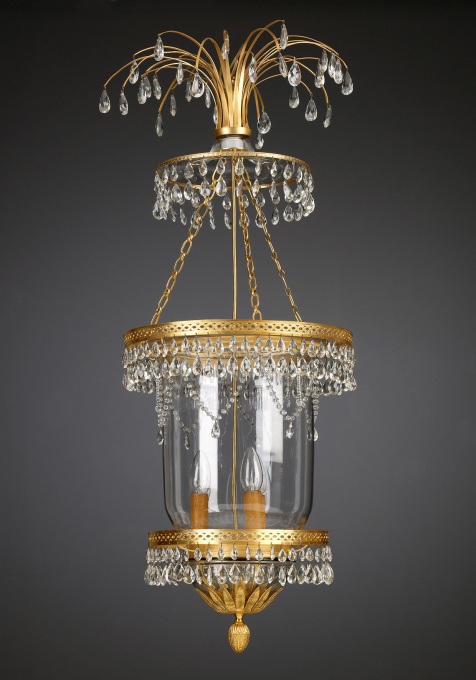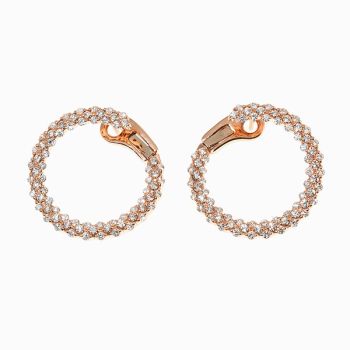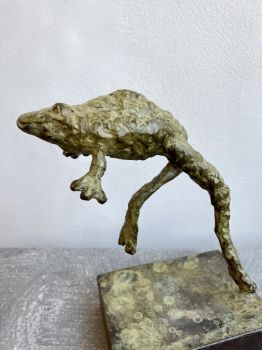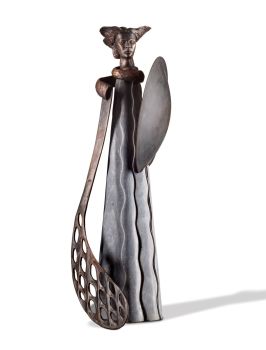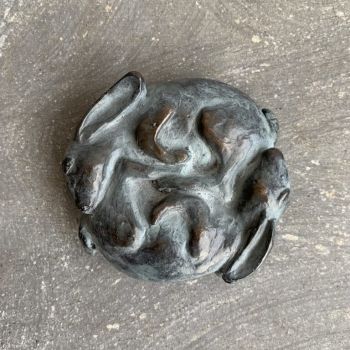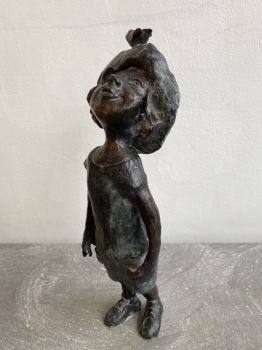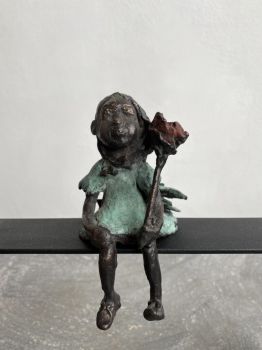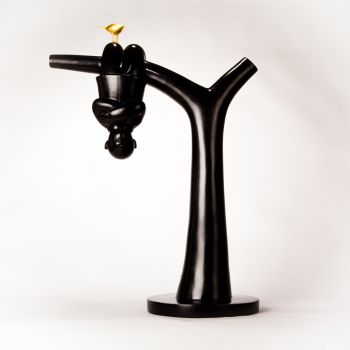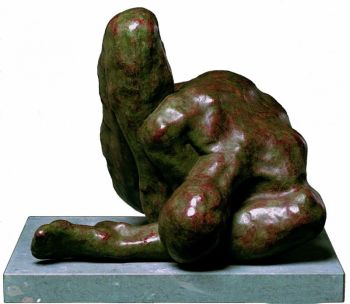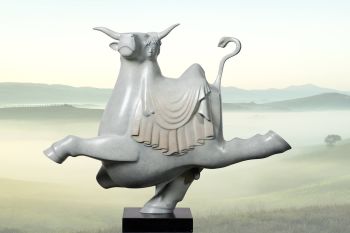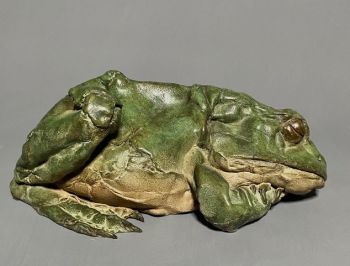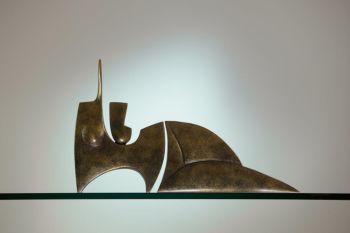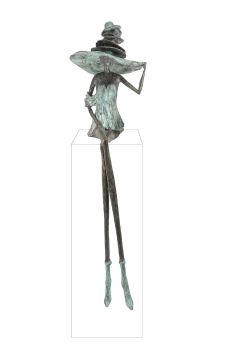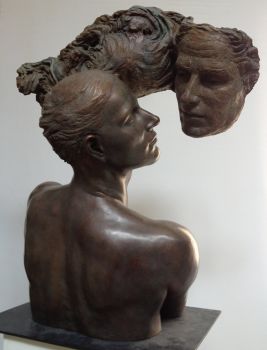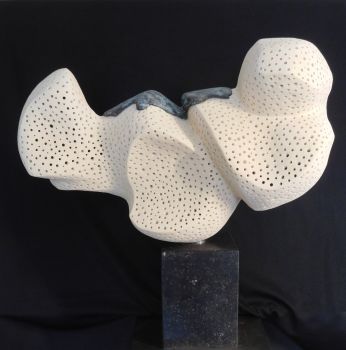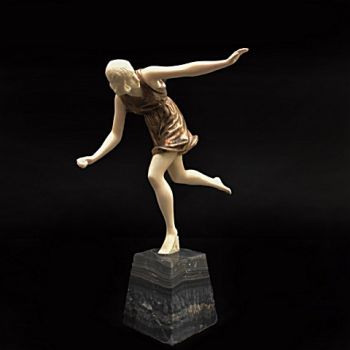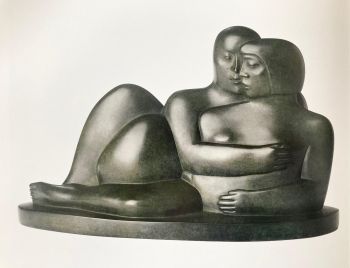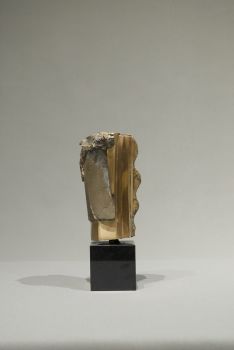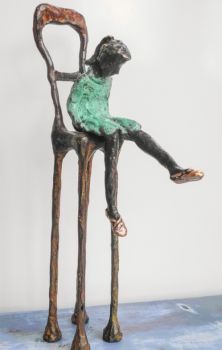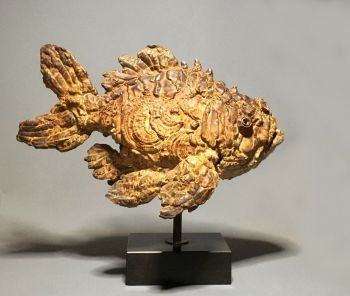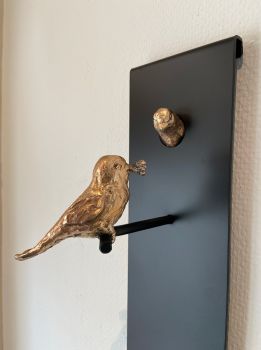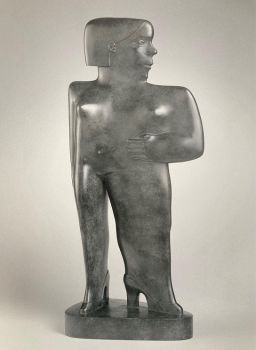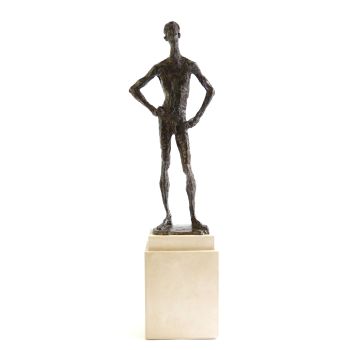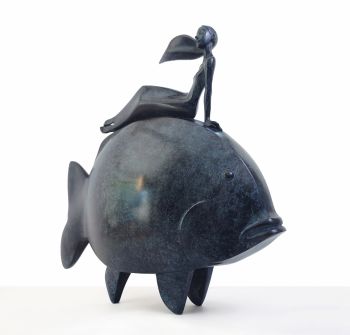Hall Lantern, Saint Petersburg 1800
Artista Desconocido
VidrioBronceOroCristalMetalDoradoPiedra preciosa
100 cm, ø 37 cm
Actualmente no disponible a través de Gallerease
- Sobre la obra de arteA hall-lantern with three lights that are placed within a bell jar.
These lanterns were ideal for lighting the hall, because the bell jar protects the candles from being blown out by the draft of the opening front door. This lantern is elaborately decorated with cut crystal pear-shapes, that reflect the light of the candles.
Saint Petersburg became capitol of the Russian Empire in the 18th century. Czar Peter the Great was the first to settle himself in the city. From 1762 onwards it was the ostentatious Catherine the Great who took residence in Saint Petersburg. She expanded the city with palaces and important buildings. The Russian nobility had to follow resulting in a wave of renovation and decoration of their domicile. This resulted in an explosion of factories and workshops for decorative arts and luxury goods around Saint Peterburg. As soon as 1735 the first glassworks were founded near the city, soon to be followed by many more. The various enterprises manufactured glass and crystal, tableware, vases, mirrors and parts for lanterns and lighting, all of extremely high quality. - Sobre el artista
Puede suceder que un artista o creador sea desconocido.
Algunas obras no deben determinarse por quién está hecho o por (un grupo de) artesanos. Algunos ejemplos son estatuas de la Antigüedad, muebles, espejos o firmas que no son claras o legibles, pero también algunas obras no están firmadas en absoluto.
También puedes encontrar la siguiente descripción:
•"Atribuido a …." En su opinión, probablemente una obra del artista, al menos en parte.
•“Estudio de….” o “Taller de” En su opinión, una obra ejecutada en el estudio o taller del artista, posiblemente bajo su supervisión
•“Círculo de…” En su opinión, una obra del período del artista que muestra su influencia, estrechamente asociado con el artista pero no necesariamente su alumno.
•"Estilo de …." o “Seguidor de…”. En su opinión, una obra ejecutada al estilo del artista pero no necesariamente por un alumno; puede ser contemporáneo o casi contemporáneo
•"Manera de …." En su opinión una obra al estilo del artista pero de fecha posterior
•"Después …." En su opinión, una copia (de cualquier fecha) de una obra del artista
•“Firmado…”, “Fechado…” o “Inscrito” En su opinión, la obra ha sido firmada/fechada/inscrita por el artista. La adición de un signo de interrogación indica un elemento de duda.
•“Con firma…”, “Con fecha…”, “Con inscripción…” o “Lleva firma/fecha/inscripción” en su opinión la firma/fecha/inscripción ha sido añadida por alguien que no es el artista
Artwork details
Related artworks
- 1 - 4 / 12
 curada por
curada porDanny Bree
1 - 4 / 24- 1 - 4 / 24

